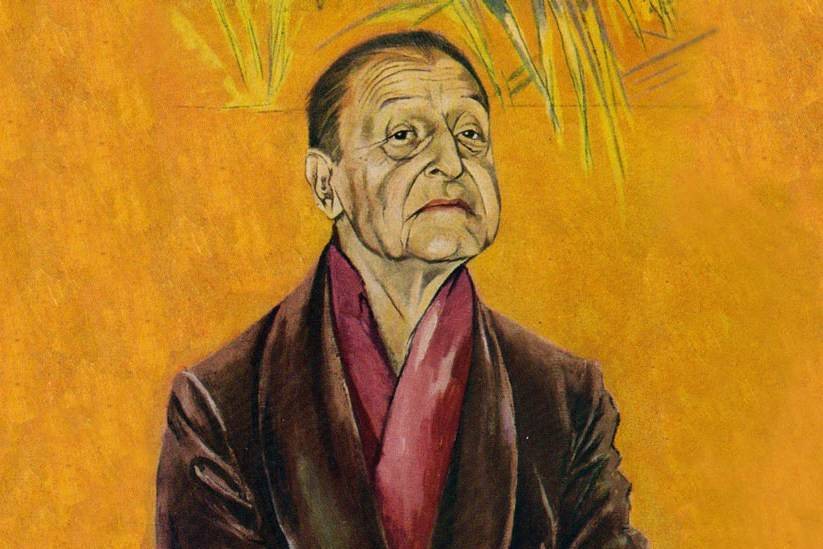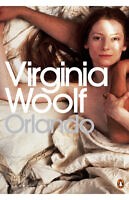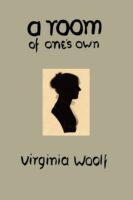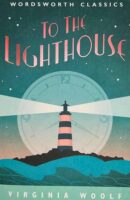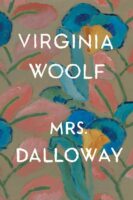Virginia Woolf: A Life
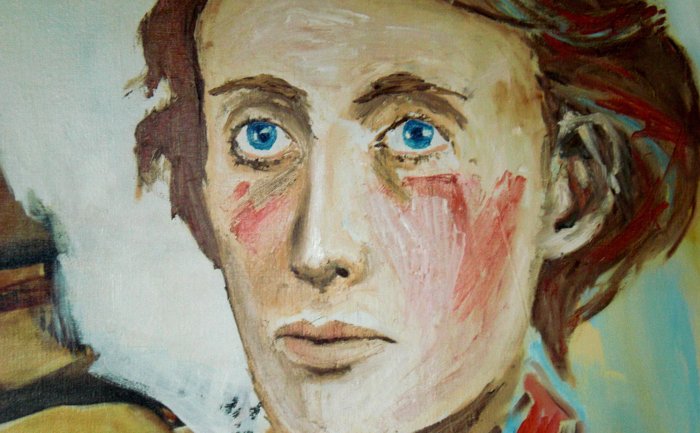
Virginia Woolf was an English writer, recognized as one of the most imaginative and creative authors of the twentieth century.
This post may contain affiliate links that earn us a commission at no extra cost to you.
Virginia Woolf: A Life
Virginia Adeline Stephen was born in 1882, the third child of Leslie Stephen and his wife Julia. The eight-family resided in Kensington, London, at Hyde Park Gate. Virginia received her education from private tutors and read books from her father’s extensive collection of classic literature, while her brothers Thoby and Adrian were sent to Cambridge.
She resented this denial of formal education, rebuking her own father for sending her brothers to school and university, while she was tutored at home. She later went to the Ladies’ Department of King’s College London. There, she studied classics and history, coming into contact with early reformers of the women’s rights movement.
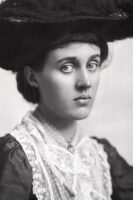
Virginia began to teach English literature and History at Morley College in London, in addition to writing articles and reviews for publications, including The Guardian, The Times and The National Review. Woolf continued her journalism throughout her life, reviewing contemporary and classical literature.
Woolf became close friends with a group who encouraged and shared her intellectual pursuits during this period. Among these pals were Clive Bell, Leonard Woolf, Roger Fry and Lytton Strachey. This group began gathering for “Thursday Evenings” in Gordon Square, London, and soon after that, Vanessa Bell’s “Friday Club” was held there to talk about the arts. The “Bloomsbury Group” was formed when these two literary and artistic circles met.
In 1912, she married Leonard Woolf, and in 1917, the couple founded the Hogarth Press, which published much of her work.
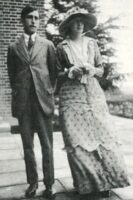
Woolf’s liberated writing reflects her relationships with women, who provided her with company and inspiration. Woolf had many relationships with women, the most noteable being with Vita Sackville-West.
They met in 1922, and it became Virginia’s most intimate connection outside of her family. Virginia and Vita were very different, their disparities in social status, sexual orientation, and politics all contributed to their attraction.
Virginia felt that Vita was “a real woman. Then there is some voluptuousness about her; the grapes are ripe; & not reflective. No. In brain & insight she is not as highly organised as I am. But then she is aware of this, & so lavishes on me the maternal protection which, for some reason, is what I have always wished from everyone.”
Woolf’s relationship with Vita inspired the fictitious biography Orlando. It follows the protagonist Orlando, who was modeled on “Vita; only with a change about from one sex to another.” Virginia saw Vita’s physical appearance as embodying both male and feminine qualities, and she wrote to her that Orlando is “all about you and the lusts of your flesh and the lure of your mind.”
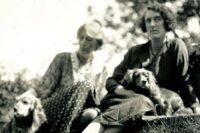
When Orlando was released in October 1928, it quickly became a bestseller, propelling Woolf to the ranks of the most well-known contemporary writers. The following year, she wrote the nonfiction book A Room of One’s Own.
Following the suicide of Lytton Strachey in 1932 and his longtime partner Dora Carrington shortly after, the Bloomsbury Group gradually fell apart. Years after Lytton passed away, Virginia was still overcome with grief and continued to write with the idea, “Oh but he won’t read this!”
Woolf was also deeply impacted by Roger Fry’s 1934 death, so much so that she would go on to write a biography of him. She felt the collapse of her own life as her friends perished.
Woolf suffered from acute depression in 1941, partially brought on by the pressure of finishing her book Between the Acts. She wanted to revise the book since she wasn’t satisfied with it, despite her publisher’s assurances. Woolf started to feel during this period that she had lost her artistic ability and that she could no longer truly exist if she was unable to write. It was “a conviction that her whole purpose in life had gone. What was the point in living if she was never again to understand the shape of the world around or, or be able to describe it?”
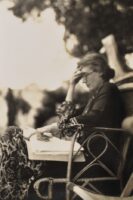
In her final letter to her husband Leonard, Woolf gave a clear explanation for her suicide: “I feel certain that I am going mad again: I feel we cant go through another of those terrible times. And I shant recover this time. I begin to hear voices, and cant concentrate.” She attempted to drown herself on March 18. On March 28, more than a week later, Virginia penned the third of her suicide letters, went the half-mile to the River Ouse, put stones in her pockets, and dove into the water.
On April 18, about a month later, three children discovered Virginia’s body not far downstream. “Suicide with the balance of her mind disturbed” was the conclusion of an inquest that was held the next day. Leonard was the only one present when her body was cremated on April 21. Her ashes were interred beneath a large elm tree outside of Monk’s House, with the final line of The Waves serving as her epitaph: “Against you I will fling myself, unvanquished and unyielding, O Death!”
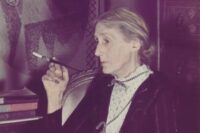
The last words Virginia Woolf wrote were “Will you destroy all my papers.”
If Woolf wished for all of these papers to be destroyed, Leonard disregarded her instructions. He published her novel, her diary entries in The Writer’s Diary, and kept all of her manuscripts, diaries, letters, thereby preserving Woolf’s unique voice and personality captured in each line.
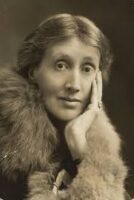
Best Virginia Woolf Books to Read
Orlando
As his tale begins, Orlando is a passionate young nobleman whose days are spent in rowdy revelry, filled with the colourful delights of Queen Elizabeth’s court. By the close, he will have transformed into a modern, 36-year-old woman and three centuries will have passed.
Orlando will not only witness the making of history from its edge, but will find that his unique position as a woman who knows what it is to be a man will give him insight into matters of the heart.
A Room of One’s Own
A Room of One’s Own grew out of a lecture that Virginia Woolf had been invited to give at Girton College, Cambridge in 1928 and became a landmark work of feminist thought.
Covering everything from why a woman must have money and a room of her own if she is to write, to authors such as Jane Austen, Aphra Behn and the Bronte sisters, and the tragic story of Shakespeare’s fictional sister Judith, it remains a passionate assertion for female creativity and independence in a world dominated by men.
The Waves
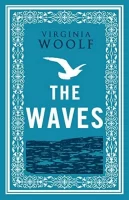
The Waves is an astonishingly beautiful and poetic novel. It begins with six children playing in a garden by the sea and follows their lives as they grow up and experience friendship, love and grief at the death of their beloved friend Percival.
Weaving together soliloquies from the novel’s six characters, Woolf delicately and expertly explores universal concepts such as individuality, the self, and community. A novel still as poignant today as it was when written.
To the Lighthouse
Mr and Mrs Ramsay and their eight children have always holidayed at their summer house in Skye, surrounded by family friends. The novel’s opening section teems with the noise, complications, bruised emotions, joys and quiet tragedies of everyday family life that might go on forever. But time passes, bringing with it war and death, and the summer home stands empty until one day, many years later, the family return to make the long-postponed visit to the lighthouse.
One of the great literary achievements of the 20th century, To the Lighthouse, is at once an intensely autobiographical and universally moving masterpiece about changing relationships and attitudes amongst the early 20th-century middle class.
Mrs Dalloway
In this vivid portrait of one day in a woman’s life, Clarissa Dalloway is preoccupied with the last-minute details of party she is to give that evening. As she readies her house she is flooded with memories and re-examines the choices she has made over the course of her life.
Mrs Dalloway contains some of the most beautiful, complex, incisive and idiosyncratic sentences ever written in English, and that alone would be reason enough to read it. It is one of the most moving, revolutionary artworks of the twentieth century.
You can read and listen to a couple of Virginia Woolf Short Stories right here on Quizlit.



